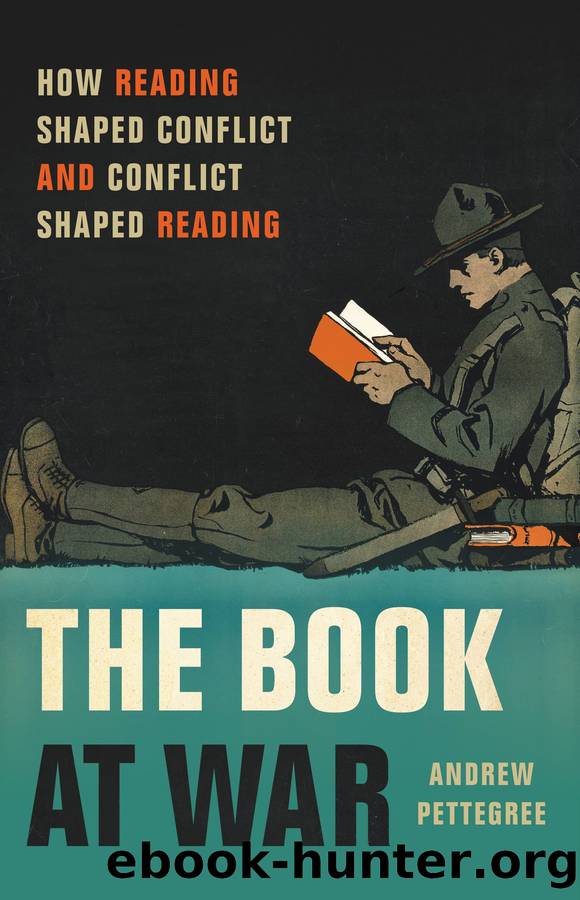The Book at War by Andrew Pettegree

Author:Andrew Pettegree [Pettegree, Andrew]
Language: eng
Format: epub
Publisher: Basic Books
Published: 2023-12-05T00:00:00+00:00
Despite these early tribulations, Yank grew into a major venture, with twenty-one editions published in seventeen countries, a total of 2.25 million weekly copies.33 Army planes carried the main-page formes to printing places abroad: editors could replace four pages of the master issue with copy of local relevance. All but combat troops paid five cents per copy. As a weekly, Yank relied on feature stories, and produced some of the best journalism of the war. Journalists, photographers and artists needed to be in the front line to do their job, and four would be killed in action.
Stars and Stripes built on the success of the troopsâ newspaper of the same title of 1917â18, which circulated up to half a million copies in the last year of the war to American soldiers on the Western Front. From 1942, Stars and Stripes produced a daily bulletin for troops in active service from the Mediterranean to the Pacific. The patient Colonel White took charge of the Mediterranean edition first issued in Algiers on 9 December 1941. This spawned a chain of editions published in Casablanca, Tunis, Palermo and Naples. A second chain emanating from London extended to Ireland, France and ultimately Germany. The Mediterranean edition was a paper of eight pages, with a longer Sunday edition of twenty-four to twenty-eight pages. Since it carried no advertising, there was a lot of space to fill.
Generating, printing and distributing such a mass of copy posed major logistical difficulties even for the American army. Plant, ink and paper had to be âborrowedâ from local businesses or the British ally. Local car owners were also persuaded to surrender their vehicles to the task of delivery. The Anzio beachhead was serviced by a daily boat from Naples. The provision of news, particularly home news, was a source of difficulty. Sports news was provided by the Army News Service. The forthcoming presidential election, however, blighted attempts to report domestic politics. It was only after the election was concluded and Roosevelt safely returned to office that Stars and Stripes was permitted to subscribe to the AP news service.
Stars and Stripes generally did a good job of reporting the soldierâs point of view. In reporting from the front, they recognised that troops despised nothing more than sugar-coating reverses or understating casualties. Correspondence, often critical of regimental officers, was received and published, and no soldier was ever disciplined for opinions expressed in these letters. Some cases were investigated and egregious faults rectified. Stars and Stripes also received 300 poems a week, and those published were a popular feature. Even bad poetry made a point as it reflected so well the GI point of view. The poetry of 1939â45 is far less celebrated or studied than the war poets of 1914â18, so it is as well to be reminded that poetry still remained a valued expression of fears and emotions on the front line.
Not all forces publications were on this scale. Individual services and divisions had their own publications such as Air Force
Download
This site does not store any files on its server. We only index and link to content provided by other sites. Please contact the content providers to delete copyright contents if any and email us, we'll remove relevant links or contents immediately.
| Booksellers & Bookselling | General |
| History of Books |
4 3 2 1: A Novel by Paul Auster(11075)
The handmaid's tale by Margaret Atwood(6875)
Giovanni's Room by James Baldwin(5896)
Big Magic: Creative Living Beyond Fear by Elizabeth Gilbert(4736)
Asking the Right Questions: A Guide to Critical Thinking by M. Neil Browne & Stuart M. Keeley(4599)
On Writing A Memoir of the Craft by Stephen King(4221)
Ego Is the Enemy by Ryan Holiday(4003)
Ken Follett - World without end by Ken Follett(3984)
The Body: A Guide for Occupants by Bill Bryson(3816)
Bluets by Maggie Nelson(3724)
Adulting by Kelly Williams Brown(3681)
Guilty Pleasures by Laurell K Hamilton(3601)
Eat That Frog! by Brian Tracy(3527)
White Noise - A Novel by Don DeLillo(3443)
The Poetry of Pablo Neruda by Pablo Neruda(3371)
Alive: The Story of the Andes Survivors by Piers Paul Read(3320)
The Bookshop by Penelope Fitzgerald(3237)
The Book of Joy by Dalai Lama(3236)
Fingerprints of the Gods by Graham Hancock(3223)
